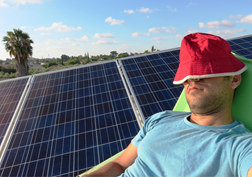Innovative concept for Moldovan Higher Education
 Moldova has faced long-standing socio-cultural challenges that continue to affect higher education policy despite its alignment with the Bologna Process and the internalisation of higher education (Wetzinger 2022) and there are concerns about the sustainability of higher education reforms (Petrov 2020).
Moldova has faced long-standing socio-cultural challenges that continue to affect higher education policy despite its alignment with the Bologna Process and the internalisation of higher education (Wetzinger 2022) and there are concerns about the sustainability of higher education reforms (Petrov 2020).
Although the demand for new skills in business administration, law and international relations became one of the driving factors for the development of the higher education sector in the early 1990s (Bischof and Tofan 2018), there is a continuing disconnect between curriculum design and labour market requirements, including insufficient digital skill training (ETF 2021). Bridging this disconnect and ensuring a smooth transition to employment becomes a shared responsibility between governmental and higher education institutions in Moldova (Ganta and Shamchiyeva 2016).
Unsurprisingly, students do not see themselves as drivers of change, expecting change to come from the institutional level (Vasilescu and Midoni 2019).
These circumstances call for a solution targeted at empowering young people to take more control of their learning and give them greater opportunities to become more competitive job seekers. The emphasis on theory, resistance to curriculum changes and lack of innovation currently represent the main issues affecting the higher education sector, as perceived by Moldovan students (Vasilescu and Midoni 2019). Moreover, the Moldovan higher education sector currently lacks practical solutions to providing workforce skillsets required by Industry 4.0. While the Education Development Strategy – Moldova 2030 sets technology-assisted classrooms as a priority and recognises the need to attune higher education to the demands of the labour market, most digitalisation and modernisation initiatives like the launch of the National Centre for Digital Innovation in Education / Class of the Future and the TwentyTu projects so far targeted secondary school pupils.
In the context of higher education, Immersive Learning features a novel approach to delivering the curriculum and the launch of this project effects change on an institutional level, starting from curriculum design. Employing VR scenarios with incorporated case studies and feedback gives students more freedom to achieve their learning outcomes without compromising on high course delivery standards. The format promotes learning-by-doing instead of traditional tutor-led teaching widely used in Moldovan universities, while its technical flexibility and content adaptability ensure transferability between subjects and levels of complexity. Using innovative technological advances to create an inclusive and immersive learning environment allows Moldovan students to approach their professional development from a lifelong learning perspective, shifting mindsets and preparing graduates for professional life.
The pedagogy
 Immersive learning consists of plunging the learner into a virtual universe, i.e. virtual class, to make him discover a subject in realistic situations. It is, therefore, a valuable pedagogical practice (cf. Gauthereau et al. 2020) that helps students and academic staff exceed several issues raised by traditional pedagogy.
Immersive learning consists of plunging the learner into a virtual universe, i.e. virtual class, to make him discover a subject in realistic situations. It is, therefore, a valuable pedagogical practice (cf. Gauthereau et al. 2020) that helps students and academic staff exceed several issues raised by traditional pedagogy.
Foremost, it mixes harmoniously empirical cases and theoretical learning (Pomerantz 2018). Within the traditional pedagogy, it is assumed that students are capable of transferring their knowledge without difficulties to real-world situations after graduation. In reality, students face issues in transposing the theory to practice, and this problem has been examined by at least 2 340 000 academic publications (according to Google Scholars). This new technology and new pedagogy fill the gap between theory and practice dug within the traditional pedagogy framework.
 Furthermore, immersive learning creates automatisms helping memorise better and acquire practical skills. According to Virtualspeech, the retention levels from VR learning riches up to 75%, compared to 5-10% for other learning methods. Repetto et all. (2021) show that students that learned thanks to 360° videos retained more words in a foreign language than these learning the language with not-immersive standard videos lessons.
Furthermore, immersive learning creates automatisms helping memorise better and acquire practical skills. According to Virtualspeech, the retention levels from VR learning riches up to 75%, compared to 5-10% for other learning methods. Repetto et all. (2021) show that students that learned thanks to 360° videos retained more words in a foreign language than these learning the language with not-immersive standard videos lessons.
Thanks to this revolutionary technology, the learning process is long-lasting, as argued by Levy 2019; students are enabled to focus on their visual memory wich benefits from prolonged encoding time regardless of stimulus type (Xiong et al. 2020) and increases the cognitive effect of the VR experience.
 Lastly, immersive experiences plunge students into a playful and rewarding universe. Merchant et al. 2014 examine the cognitive effect of virtual reality-based instruction and find out that gamification improves learning gains of the students. Also, immersive learning pedagogy allows learners to become active learners. In traditional courses taught in real or virtual lecture rooms, students passively listen to the teacher’s presentation. Students become active learners when plunged into a virtual authentic learning environment and working with tangible elements. Immersive learnining increase students’ engagement with the lesson and studied subject. According to VirtualSpeech the completion rates for courses based on the VR technology is 30-40% higher than traditional e-learning courses.
Lastly, immersive experiences plunge students into a playful and rewarding universe. Merchant et al. 2014 examine the cognitive effect of virtual reality-based instruction and find out that gamification improves learning gains of the students. Also, immersive learning pedagogy allows learners to become active learners. In traditional courses taught in real or virtual lecture rooms, students passively listen to the teacher’s presentation. Students become active learners when plunged into a virtual authentic learning environment and working with tangible elements. Immersive learnining increase students’ engagement with the lesson and studied subject. According to VirtualSpeech the completion rates for courses based on the VR technology is 30-40% higher than traditional e-learning courses.
Passive learner

Active learner

Thus, in the context of learning a discipline like Introduction to Business & Management, learning by immersion stimulates students’ cognition, letting them face real situations, which is crucial for their formation and more effective than traditional face-to-face lessons.